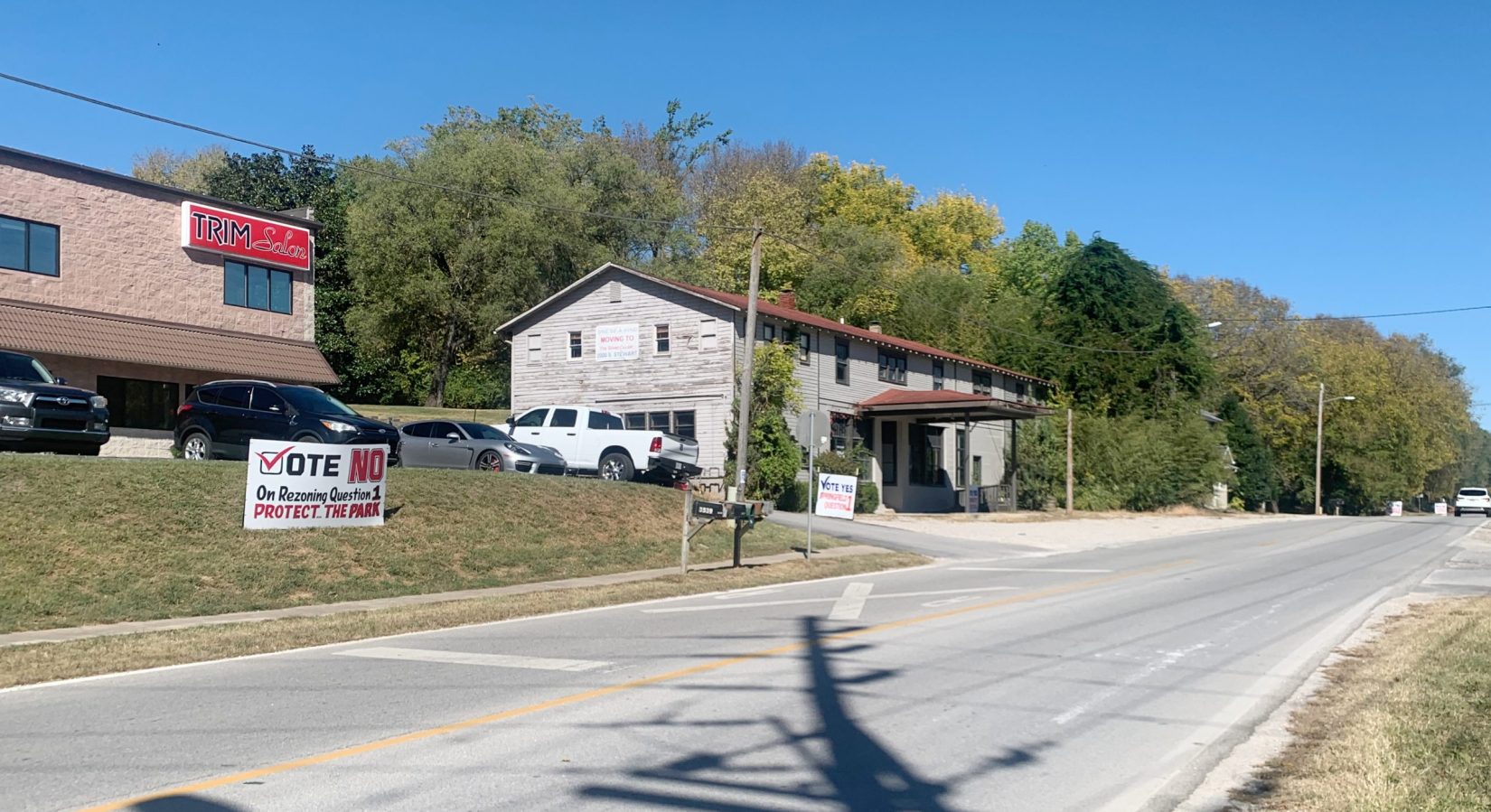OPINION |
by Kay Logsdon, Springfield
I had the privilege of being part of Vision 20/20 (adopted in 2004) — and was one of many local residents who had input into what we wanted Springfield to look like in 20 years.
At the time, I also worked for the City of Springfield, and saw the work up close. One of the things I personally heard over and over was the desire for mixed-use developments. “Wouldn’t it be great if we could have shopping and food right where we live?” The retail, housing, restaurant concept was new to many back then.
Now, almost 20 years later, we’re there, and all generations are fans of mixed use. And yet, when an area in Galloway Village was declared blighted and developers were invited to submit proposals — well, the story got confused.
The Daily Citizen has done a good job of recounting the steps that it has taken to put this on Tuesday’s ballot. This is my attempt to clarify the issues without the restraint of holding an unbiased opinion.
- The area was declared blighted by the city, and developers were invited to submit proposals. It is blighted land that can be made useful and carry a tax base.
- This development is projected to generate $50,000 to $75,000 annually in retail sales tax. After 10 years, the development will generate more than $100,000 annually in real estate taxes. (Any developer of this property, or any property in Galloway, will utilize the Chapter 99 tax abatement.)
- Both the property to the north and south of the proposed development are already commercially zoned. The property in question is the only lot zoned residential in that corridor along Lone Pine.
- The developer has worked with the neighborhood for four years, through five iterations of the development plan. The current plan is considered a great compromise that is ready to move forward.
- This one neighborhood is on the ballot, but the decision will affect all future neighborhoods. If the developer cannot move forward, he likely won’t spend more money after the tens of thousands already spent; he can sell the land and the next developer can level the trees and start over — possibly under revised zoning laws that better reflect the plans and ideas for more mixed use development put forward in Forward SGF.
- If that happens, the neighborhood may not get as good a project — as has happened as Sunshine and National near Mercy.
(My understanding of that situation is this: In 2016, the University Heights neighborhood rejected the idea “Grandpa’s House,” which was to be a five-bedroom B&B designed to serve families involved with medical care at Mercy. Neighborhood residents objected to the rezoning. The rezoning failed and the property stayed residentially zoned. The person who wanted to do the B&B project walked away and sold the property. This allowed new developers, well within standard practice, to assemble a number of lots, including the house at 1755 S. National — which they otherwise would likely not have bought or torn down.)
- The development in Galloway does mean jobs, housing, and a broader tax base to fund schools and first responders — as opposed to blighted property. If developers don’t feel able to come in — creating jobs, creating great, livable spaces, and adding to our economy — without being subjected to neighbors who may have an objection, they will not spend the prep money to even consider development in Springfield. So many local leaders who work with this every day have a high level of concern about this, and you can see their statements online.
- As a point of history, one of the original plans was to clear the site of buildings and trees. They had designed 15,000-20.000 square feet of retail/office space with 140+ residential lofts. There are some early renderings still being used to object to the proposal. Now, with the compromise that was worked through, the proposal keeps four commercial buildings, reduces the retail/office to 8,000-9,000 square feet, and reduces the residential density to 90-95 units.
- Those four buildings that will be kept are considered “historic” by the neighborhood, although there isn’t any formal designation that I’m aware of; they are considered important to the charm of the neighborhood. The proposal retains 100+ mature trees, plants an additional 29 trees, and adds 500+ native species of plants. The design has 75% more green space than required by the City. The developer agreed to, at his cost, construct a raised cross walk, install a turn lane, improve stormwater, reduce the density, reduce the height of the building along Lone Pine to two stories, and more. Again, all this to restore blighted property to something useful—likely actually improving property values in the area.
- City Council and Planning and Zoning passed the rezoning with a vote of 7-1 in 2020.
From all I have studied about this situation, if people are willing to accept the reasonable compromise and vote “Yes,” the buildings the neighborhood indicated are important to them will stay. If people vote “no,” the next developer will — as I understand it — be within his/her rights to immediately demo those buildings, take down trees, and go to the city with a rezoning plan after that is done.
Obviously, people working in good faith don’t normally do that — but it is a cautionary note that people need to understand.
Search for “Vote YES Question One” on Facebook to see the videos from local leaders and get more detail. Or go to the campaign website.
Kay Logsdon is a semi-retired marketing executive and former nonprofit director who served from 1989-2000 as public information director for the City of Springfield.
Related:
What you need to know about the debated Galloway Village ballot issue
Ballot Question 1: Developer plans apartments and retail, but opponents warn of dangers to Sequiota Park area


